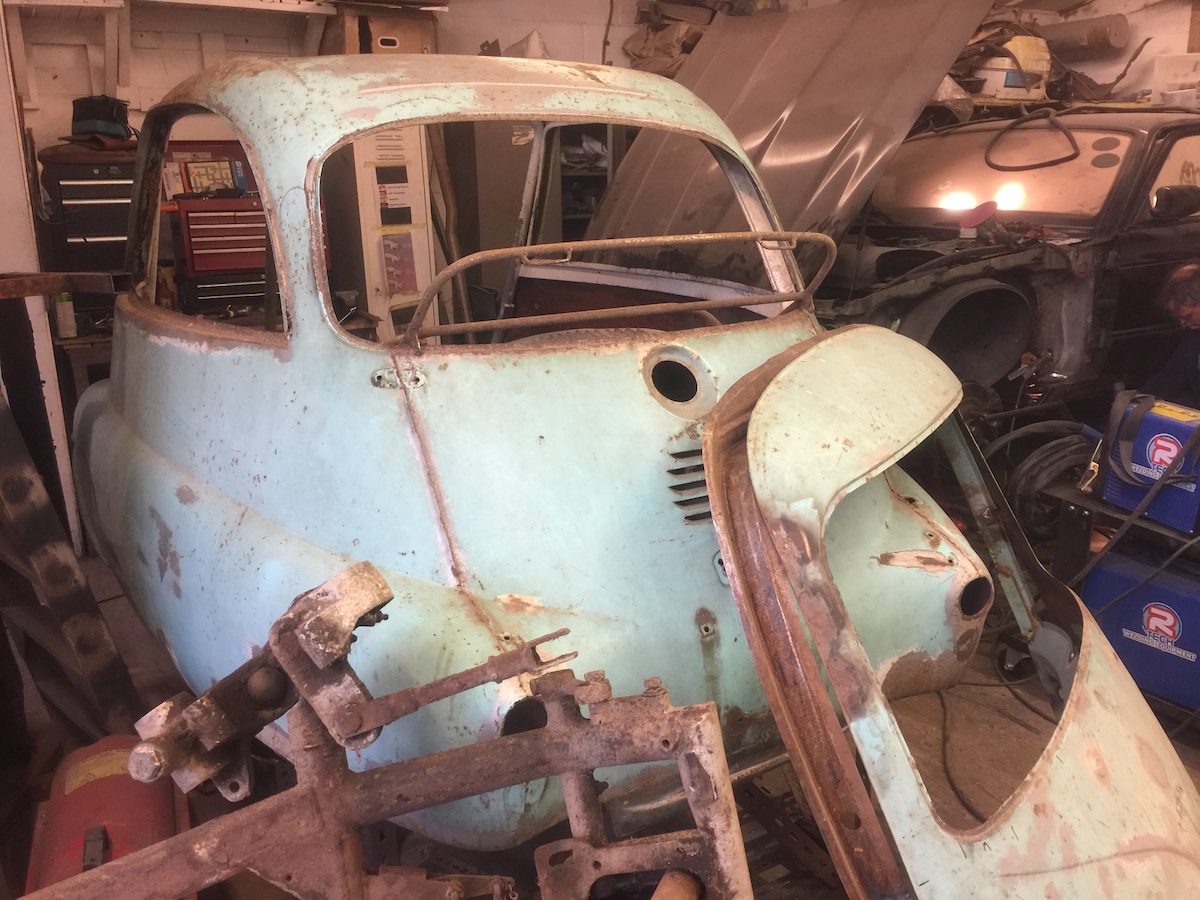
Shot blasting is not as common of a term as sandblasting but it involves using round abrasives to get rust, oxidation, dirt and other debris off of metal components so they can be worked with and painted or refinished. But what does it actually do, what’s the difference between sandblasting and shot blasting and why would you want the procedure for your vehicle. We’ll answer all these questions and more in this 7-minute read.
Shot blasting removes contaminants like oxidation, rust and dirt from metals but also concrete and some ceramics. Metal Supermarkets explains, “Shot blasting works by propelling round materials known as shot media against a surface which in turn removes the contaminants of the surface and also can improve its finish. What type of shot media is used is a very important decision for the shot blasting process. The size and hardness of the shot material will dictate how much surface removal of the material being cleaned will occur. The type of material being cleaned will also play a role in the effectiveness of the shot blasting process. Typically, the shot material and size will be selected depending on the composition of the material whose surface is being shot blasted.” That’s why you need to hire a shot blasting team that knows what they’re doing or you risk damage to your vehicle.
Sandblasting uses grains of sand and air to push the sand out at a high velocity. Shot blasting uses uniform and round particles to clean just as well but without the air propulsion. Finishing Systems explains, “The term “shot blasting” refers to the process of propelling abrasive media material with centrifugal or mechanical force. Shotblasting has an entirely different [pressurising] system than sandblasting. This abrasive treatment method uses a device similar to a spinning wheel to centrifugally accelerate shot-like material and blast it against a surface.” Sandblasting isn’t even done anymore in the UK with actual silica sand because it's very dangerous and causes lung cancer.
Of course, shot blasting is safe but with any advanced cleansing procedure it needs to be performed by a trained technician. Ervin explains, “While the process is relatively straightforward, the utmost care must be taken in its application. Any abrasive shot used in the blasting process will be propelled at extreme velocity and can cause significant harm to workers if the correct precautions are not taken. This can cause lacerations, puncture wounds, and worse. A poorly prepared blasting space can also result in significant material and property damage, causing significant loss of time and resources while the issue is properly addressed and cleared.” When undertaking shot blasting work, make sure to find an experienced body shop that adheres to all the required safety protocols.
Sandblasting isn’t actually banned but the use of silica sand is. You can still use air propulsion to fire abrasives at metal, ceramic and so on, but you can’t use silica anymore. This is because the material was causing lung cancer in sandblasting technicians and other exposed workers because the process creates a lot of dust and debris. That debris is hard to control and protect against, leading to a high cancer risk. So it was banned in the 50s.
The cost of shot blasting varies but £20-£40 per hour is fairly standard. So, for specific items, you might expect to pay the following:
Checkatrade suggests, “if you’re considering sandblasting, speak to local specialists for their professional advice and options for your project. Ask for detailed quotes with accurate sandblasting costs in your area. Discuss the need for permits and any other potential costs you may incur. Shop around for fair and competitive sandblasting costs. Always hire a tradesperson with relevant experience and ask to see examples of their recent work. When hiring a tradesperson, check their previous customer reviews to confirm the quality of their work.”
The purpose of abrasive blasting is to prepare the material (usually metal) for painting, finishing, peen and other treatments. It removes surface debris. This cleans and prepares the surface for other activities like powder coating, vinyl, paint and more. There are many kinds of abrasive blasting including grit and shot. But this refers mostly to the materials used and the way the abrasive is delivered to the material’s surface. The shot is rounded pellets and grit is irregular abrasive material like sand or walnut shells. What you use for your project depends on your needs and what is being prepared. You’d use abrasive or grit blasting on surfaces where the metal shot won’t work.
Different from shot blasting, the abrasive blasting process uses an air nozzle instead of centrifugal force to strip surfaces. Progressive Surface explains, “Abrasive grit blasting, or [sandblast cleaning] is a surface treatment process widely used in a variety of different industries with many diverse purposes. Abrasive blasting is the process by which an abrasive media is accelerated through a blasting nozzle by means of compressed air. The abrasive used varies based on the surface treatment required.” This differs from the shot blast process as those media are rounded and delivered via a spinning wheel.
In summary, shot blasting is a safe and effective way to remove old paint, rust, dirt and debris from metal, ceramic, concrete and other materials. This can be done as a clean or as prep for painting or other treatments. And it’s important to hire an experienced body shop to undertake this work as working with shot blasters is highly specialised.